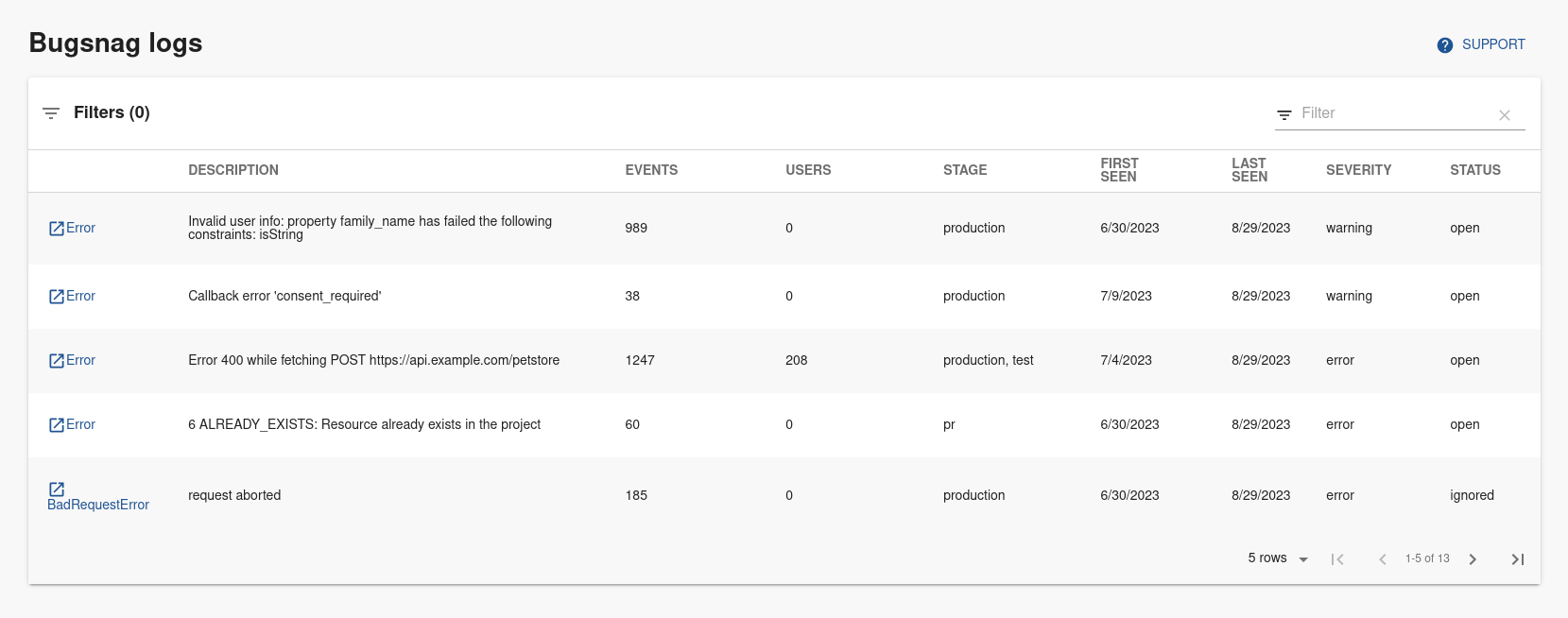Since Bugsnag has a policy around API rate limits (https://bugsnagapiv2.docs.apiary.io/#introduction/rate-limiting), we are not displaying error trends in the table. However, you can visit error details page in Bugsnag for more details, including error trend.
- Bugsnag plugin errors overview tab.
If you have your own backstage application without this plugin, here it's how to add it:
- Install the plugin inside
backstage/packages/app:
cd packages/app
yarn add @roadiehq/backstage-plugin-bugsnag- In the
app-config.yamlfile in the root directory, add bugsnag to the proxy object:
proxy:
...
'/bugsnag/api':
target: 'https://api.bugsnag.com'
headers:
Authorization: 'token ${BUGSNAG_PERSONAL_TOKEN}'
X-version: '2'Define number of results fetched per request (this is optional and if ommited it will be set to default value of 30). This will be used as a 'per_page' parameter (https://bugsnagapiv2.docs.apiary.io/#introduction/rate-limiting).
bugsnag:
resultsPerPage: <number>- Add plugin to your Backstage instance:
// packages/app/src/components/catalog/EntityPage.tsx
import { EntityBugsnagErrorsOverviewTable } from '@roadiehq/backstage-plugin-bugsnag';
...
const serviceEntityPage = (
<EntityLayoutWrapper>
...
<EntityLayout.Route
path="/bugsnag"
title="Bugsnag">
<EntityBugsnagErrorsOverviewTable />
</EntityLayout.Route>
...
</EntityLayoutWrapper>
);- Run backstage app with
yarn startand navigate to services tabs.
- Add annotations to the yaml config file of a component:
bugsnag.com/project-key: <organization-name>/<project-name>Note that you must use the full names, not the slugs.
These values can be found in Bugsnag settings dashboard, under organization and project settings.
-
Add your Bugsnag personal auth token to the environment variables of your backstage backend server (you can find it in https://app.bugsnag.com/settings/{organizationaname}/my-account/auth-tokens), in the form of the word 'token' followed by your token. So it should look like this:
BUGSNAG_PERSONAL_TOKEN="token <your-api-key>"
- Backstage
- Get hosted, managed Backstage for your company: https://roadie.io

